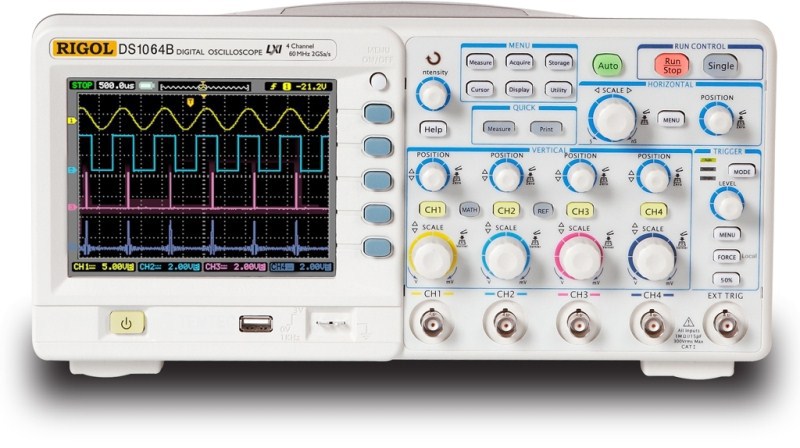Week 3
During this past week, I learned how noise can interfere with certain tests and thus, those certain tests must be run manually on an oscilloscope. An oscilloscope is basically an advanced meter that is capable of digitizing multiple signals at once while displaying the many waveforms on the screen. We used the oscilloscope because the noise, which arises externally from other test signals, testers or equipment, was impacting the test circuitry causing the test to fail.
Essentially, an oscilloscope functions to display an electrical signal as it changes over time. Oscilloscopes measure primarily time-based and voltage-based characteristics such as frequency, period, and rise/fall time and amplitude, maximums/minimums, and means respectively. Leads are plugged into the bottom, where those five outputs are, and connected to test points on the silicon chip. Before measuring data though, the trigger must be set, which will tell the oscilloscope what portion of the signal to trigger on and begin measuring. For example, if you desire to only view the graph of the negative slope of a signal, you record that with the trigger, and data is collected starting with the first sight of a negative slope, which can be seen on the graph of the scope pictured above.
I was also introduced to a lab setup that included a saline tank, which is designed to simulate the conductivity of the human body where a pacemaker would be implanted. The tank is filled with sodium chloride and water and several pH probes are placed in tank to ensure the water remains at the same pH throughout various locations in the saline tank. The pacemaker leads are submerged in the water and are attached to external bench equipment. One interesting aspect of this form of testing is that there are many different types of leads and they all must be analyzed to ensure proper operation.


No comments:
Post a Comment